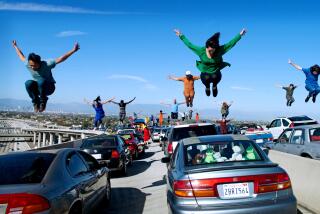Griffith Observatory: Take a picnic, take a pal. Just remember, we are all stardust
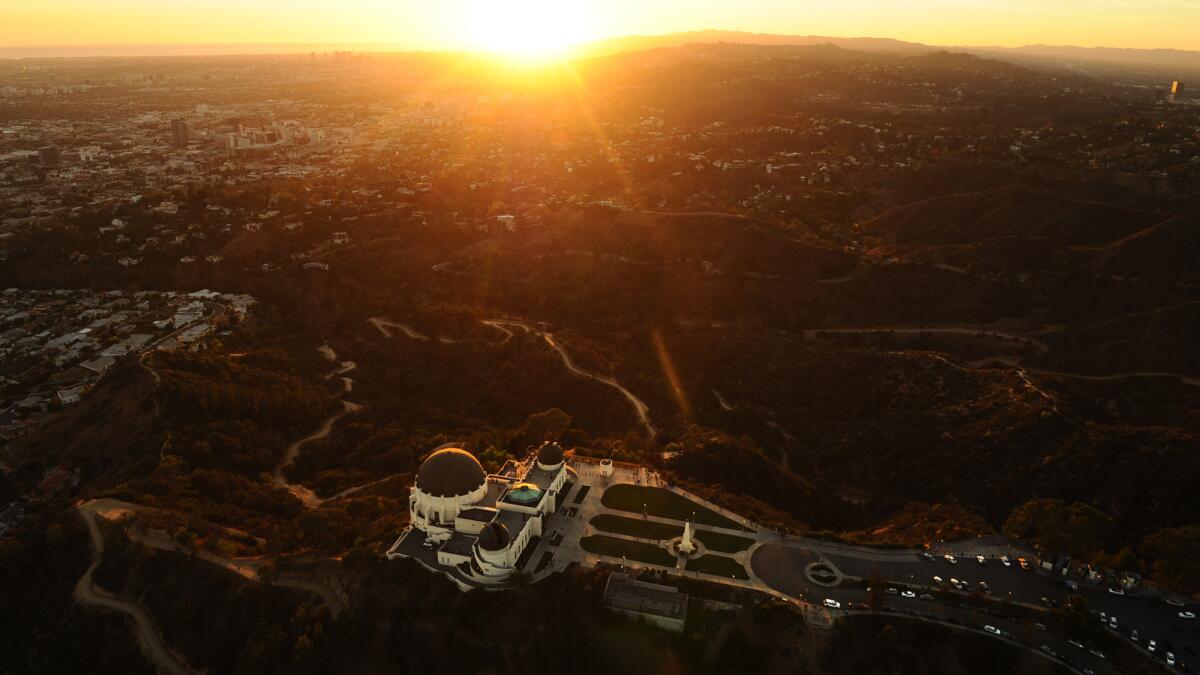
Some monuments are movie stars. So it is with Griffith Observatory. Great cheekbones. Uncommon presence. Something in the eyes.
Indeed, if L.A. has a tickle spot, it would be here on the hill, east of the sun and west of the moon. A playful scion of scandal and great wealth and growing more stately over time, Griffith Observatory is a must-do activity for out-of-town guests. More than the ocean. More than Hollywood Boulevard or even that pricey theme park in Anaheim that you love or loathe.
A visitor can choose to get significantly smarter here or just zone out. The planetarium, in the minutes before the projection show as you lean back in that big slab of an easy chair, is one of the most meditative places in a major American city.
Then the show starts, fluidly narrated by a live human being from a script with more zing and drama than what’s playing at the local multiplex.
Sit back and watch Orion in winter or how Polaris never moves, making it so significant — the star that guided hungry Bedouins across the deserts and scurvy sailors across the seas.
Gaze up at the planetarium’s ceiling and chart the paths of the kings and warriors who march the sky. You can push yourself to absorb it, as though you are getting a do-over of college astronomy. Or you can marvel over its majesty as you would a world-class orchestra.
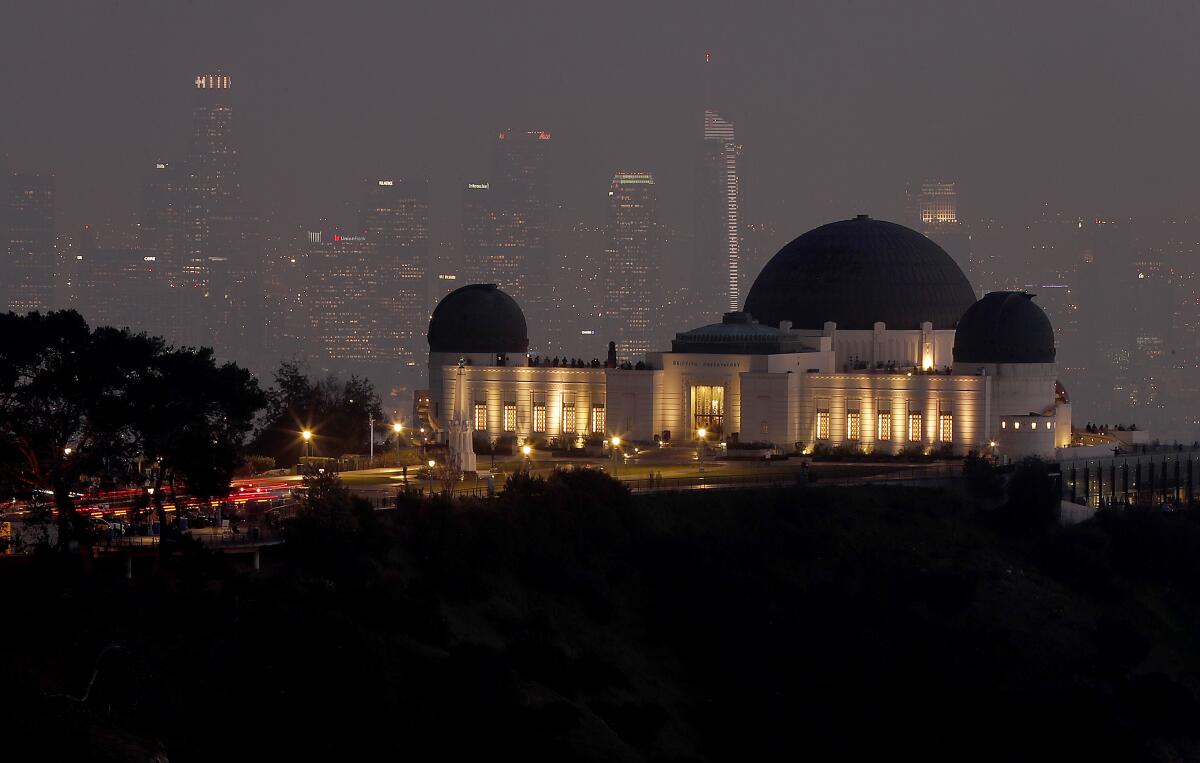
The video also places you in your proper spot in the universe, miles from the nearest disenchanted Uber driver or belching cross-town bus. For 30 minutes, it takes you away from your petty problems. Here you are, amid the billions of stars, the snowy galaxies, the sequined ball gown that is the expanding universe.
There are worse ways to kill a winter evening.
“We are all stardust,” the planetarium narrator concludes, which I take to mean we are all stars. Who knew? We didn’t even have to audition.
The show costs $7, by the way. Everything else — the telescope viewing, the exhibits, the best breezes outside the South Bay — is free.
Indeed, if Camelot had an observatory, this is what it would look like, a mixed mutt of Art Deco, Greek Revival, Beaux Arts, Moderne. In 2002, it was once again torn apart and put back together so it wouldn’t leak anymore and the marble skin glowed once again.
To preserve the handsome shell, they dug deep under the yard to create basement galleries and an additional 200-seat theater.
Don’t miss these. Many people do. They get swept up in the main entrance — where the Tesla coil lightning show draws gasps and the elegant Foucault pendulum demonstrates how Earth twirls, confusing dozens of onlookers at a time.
As reference, there is the building’s main mushroom, then the two smaller bumps where the telescopes live.
The solar telescopes, to the right, flash several images down into the building, including a big porthole image into the main hall.
The other bump, to the left, is the 12-inch Zeiss, open at night. No telescope in the world has had more people look through its lens. Viewing starts around 7 p.m., although it varies when the days get longer. If it’s cloudy, you can enter and take photos, or head out to the lawn where astronomers await with a smaller set of bazookas.
The views are free too. The adjacent hiking trails? Free and among the city’s best. The Hollywood sign? You can almost kiss it.
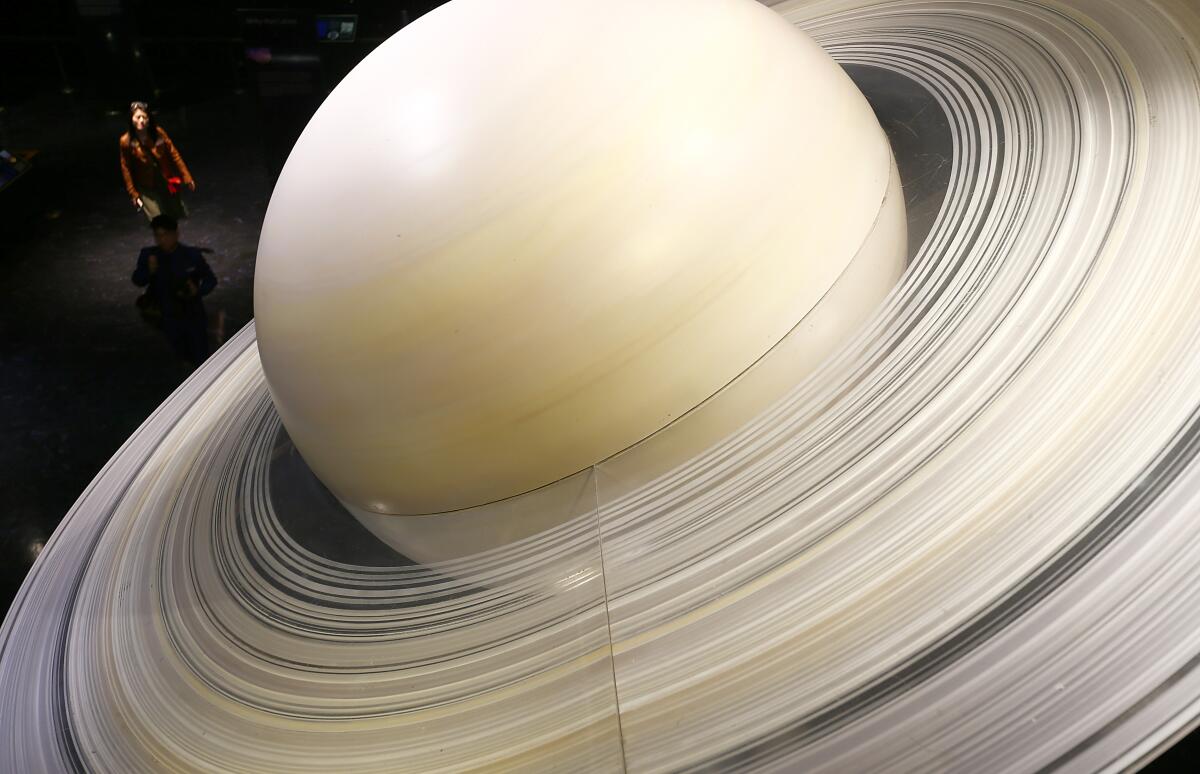
Honestly, if you ran Griffith Observatory, what would you change? You might add a gondola lift for access. Parking could be easier, but you could say that about most any place.
Pro tip No. 1: Park near the Greek Theatre and take the 50-cent Dash shuttle to the observatory, avoiding congestion and the $10 per hour parking at the top.
You know, they originally wanted to perch this place at the very top of Mt. Hollywood? Architects said, yeah, that would be cool, but how would anyone get there?
So they placed it on this roomy pancake on the south slope, which makes the most of its 100-mile sightlines. Some days you can see to Pittsburgh, or so it seems. At the very least, Big Bear.
On the solstice, a brush of sunlight stripes the floor of the West Terrace. Public talks mark the occasion, as well as other astronomical milestones, such as an equinox or an eclipse.
Pro tip No. 2: A summer solstice picnic at the observatory might be L.A.’s coolest first date.
That this place even exists is somewhat of a miracle. The rich hot mess who made it all happen, Griffith J. Griffith, had already donated 3,000 acres for the park. After a visit to Mt. Wilson, the baron said, “If all mankind could look through that telescope, it would change the world.” So he proposed a public telescope for his park.
At the time, Griffith was fresh from prison for shooting his wife, and the city balked at any further dealings with a bossy, alcoholic felon. But as we know, sometimes you can bankroll your redemption. That’s what Griffith managed to do. In his will, he got what he wanted, leaving the money for the observatory and the Greek.
The observatory opened in 1935 amid the Great Depression. In all the time since, it has never been a research facility. It is used only for public enjoyment. The city runs it — yes, the same city that runs LAX; you can’t help but appreciate the differences.
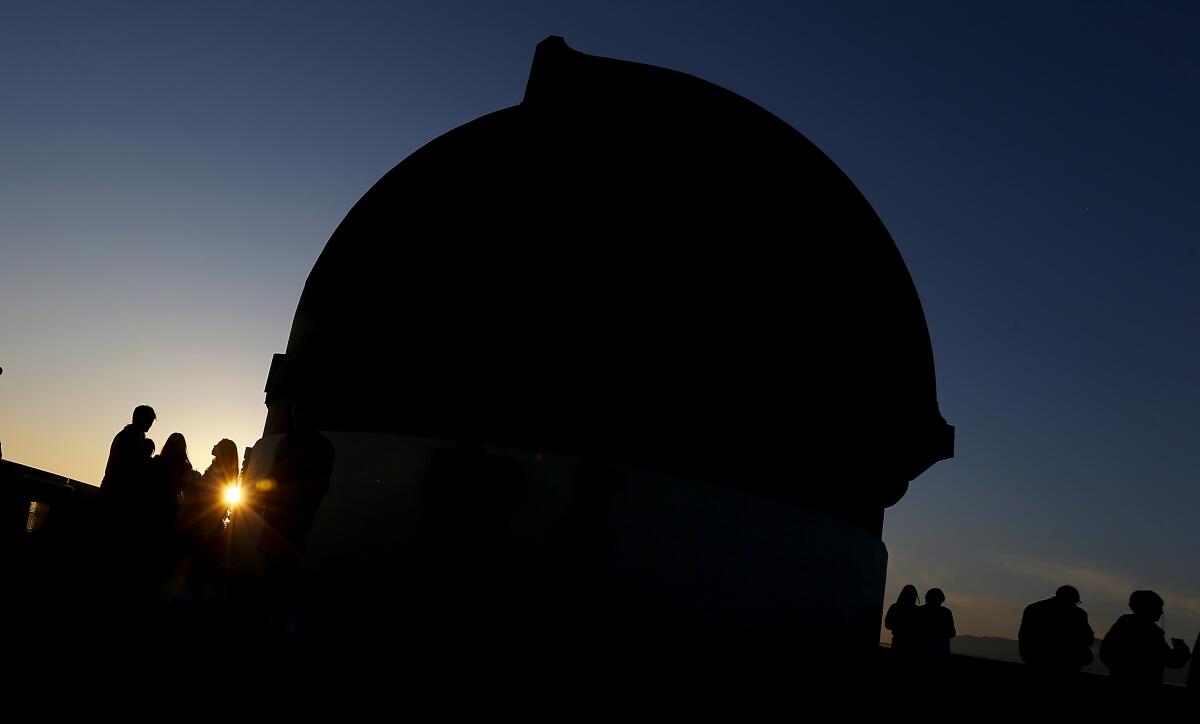
“Our job is inspiration and a change in perspective,” says deputy director Mark Pine.
Best times? Sunset, naturally, as with everywhere else. Just better, amid the quail and the chaparral. You can sniff the sage in the canyons. You can watch the glossy half-smile of Santa Monica Bay.
And the lights of the city, the glowing embers of another long SoCal day, not so different from the loaded sky.
Pro tip No. 3: Weekends up here can be brutal, like a Rams game, elbow to elbow, lines that linger.
The weekdays? Entirely different, and you can walk right up to the ticket window and snag two tickets to the next show, lie back in that easy chair and ponder how in this monster of a city you can find these quiet little curtains of quiet.
At this spa of the stars, on a hill that gazes down — and up — on just about everything.
Essentials
Hours: The observatory is open noon to 10 p.m. Tuesdays-Fridays, 10 a.m to 10 p.m. weekends. It is closed Mondays. The building, lots and nearby trails will be closed March 1 for a special event.
Waits can be an hour at the night telescope. It’s not in operation on cloudy nights, but you can still enter the chamber and look it over and snag a selfie.
Shows: There are up to 10 planetarium shows a day. The best is “Centered in the Universe,” but the observatory is adding “Signs of Life” in June, its first new show in 10 years. Planetarium tickets are available only in person the day of the show. If the line is long, try the self-serve kiosks. Children younger than 5 are allowed only at the first show of the day. Prices: $3-$7.
Parking: Notoriously tricky on weekends, it loosens up during the week, and spaces are generally available near the top, for $10 an hour. Dash shuttle from the Greek Theatre costs 50 cents.
Info: Griffith Observatory
More to Read
Sign up for The Wild
We’ll help you find the best places to hike, bike and run, as well as the perfect silent spots for meditation and yoga.
You may occasionally receive promotional content from the Los Angeles Times.

